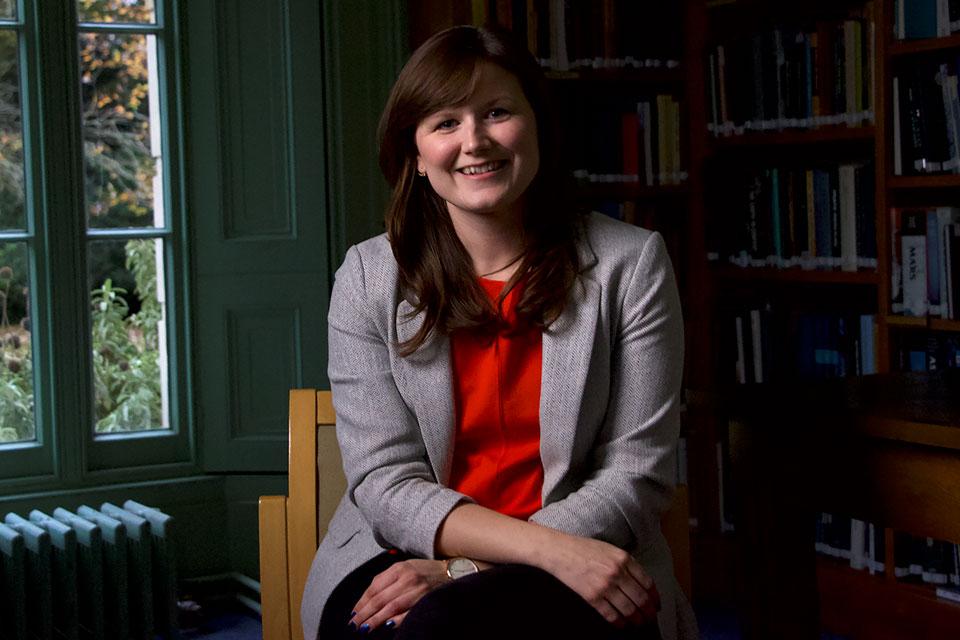Astrophysicist, Dr Becky Smethurst, talks all things astronomy to celebrate Astronomy Day, 7 May 2022.
On this National Astronomy Day, we are all encouraged to look up at the sky and behold its wonders. When I look at the sky and contemplate the possible infiniteness of the Universe, I feel so hopeful. I feel like there are infinite places I could go, or versions of myself that I could become. I feel limitless. Anyone can reproduce that feeling, just by lying down on the ground and giving your eyes time to adjust to the darkness outside before looking up and getting lost in the view of the stars. To me though, the the night sky becomes even more spectacular when I know what I’m looking at; astrophysics opens your eyes even more to the marvels of the Universe.
There is lots to see from the UK right now, even though our nights are getting ever shorter – meaning we perhaps have to stay up that bit later, or get up that bit earlier to enjoy the sights. If you are an early riser, waking up before 5am, look toward the eastern horizon where the sky is beginning to lighten with the glow of the rising Sun and you might be able to spot four planets all in a line. From bottom to top we currently have Venus, Jupiter, Mars and Saturn all visible in May 2022. Venus and Jupiter will be quite close to the horizon, so if you are high up with nothing blocking your view you might just be able to spot them. Mars and Saturn will be higher and easier to spot: Mars with its reddish glow and Saturn much fainter looking slightly yellow.
Lost for words
If you have a telescope with at least 25x magnification, break it out and see if you can see Saturn’s rings. With a lower magnification they will appear like Saturn has 'ears', but with higher magnification you will be able to see them as separate structures. This is an amazing sight in itself (I have seen people have their first view of Saturn through a telescope and be lost for words), but it has even more significance when you think about how the Cassini mission which orbited Saturn for over a decade revealed that the rings are only 100 million years old, at most. This means that the majority of the dinosaurs, if they had telescopes like we do, would not have been able to see the rings of Saturn - because they hadn’t formed yet!
The perfect straight line you can draw between all four planets is also a nice reminder that the solar system planets all orbit on one flat plane around the Sun. This line is the path that all solar system objects take through the sky including the Sun. As the Sun rises higher in the sky in the summer months, so too will the Moon and the planets. This plane of the solar system doesn’t line up with the Milky Way, which stretches out in different line across the sky (the Sun is tilted compared to the flat disk of the Milky Way).
The glow of millions of stars...
Although the nights are getting steadily lighter, in the summer months we also start to catch a glimpse towards the centre of the Milky Way where there are more stars and dust to provide a more interesting view of our galaxy (if you happen to head south for your half-term or summer holidays, the view will be even better). Look out for Cygnus, the swan constellation, that looks like a big cross in the south-eastern sky; this cross marks the glow of the Milky Way across the sky (the Milky Way gets its name because it is supposed to look like spilled milk across the sky, caused by the glow of millions of stars so far away their light merges into a faint glow).
Speaking of the centre of the Milky Way, us astronomers in Oxford's Department of Physics are all incredibly excited for the announcement coming from the Event Horizon Telescope on 12 May 2022. The assumption is that we will finally be getting an image of the supermassive black hole at the centre of our Milky Way, similar to the image released in 2019 of the supermassive black hole in the centre of the galaxy Messier 87. We are all on tenterhooks waiting to find out what it might look like and what the image could teach us about gravity around such massive objects. So I will be staring up at the night sky towards the centre of the Milky Way on the southern horizon this National Astronomy Day with impatience and unbridled excitement!

